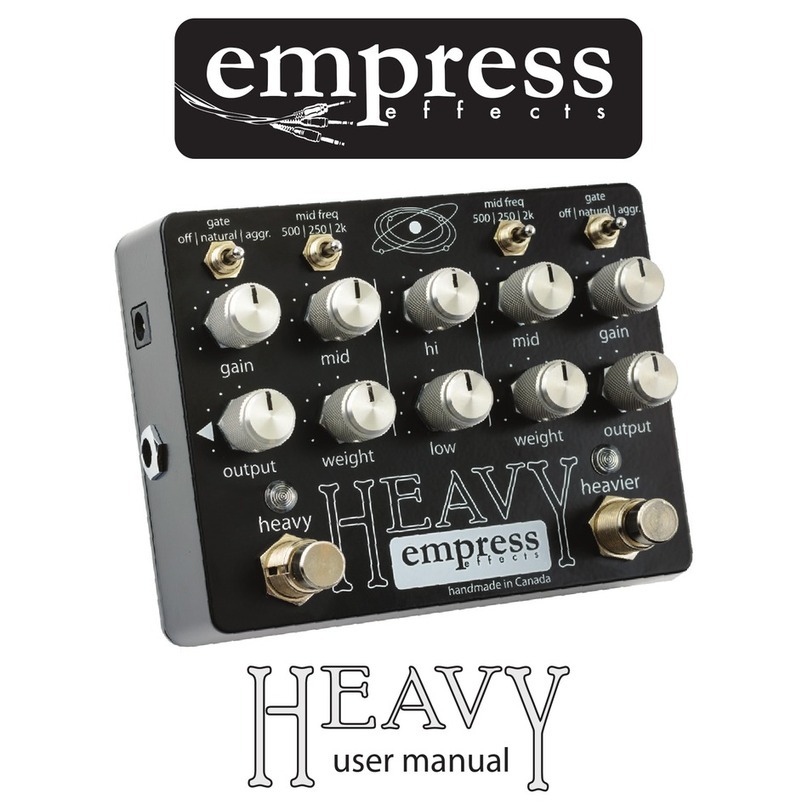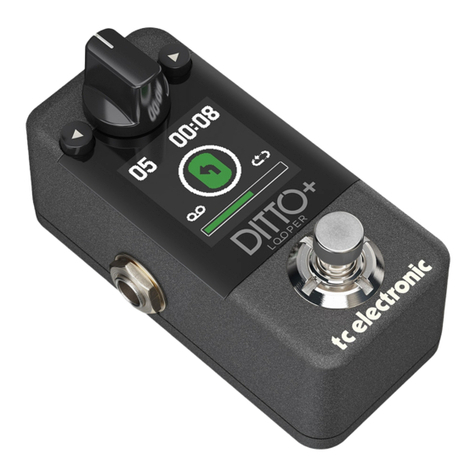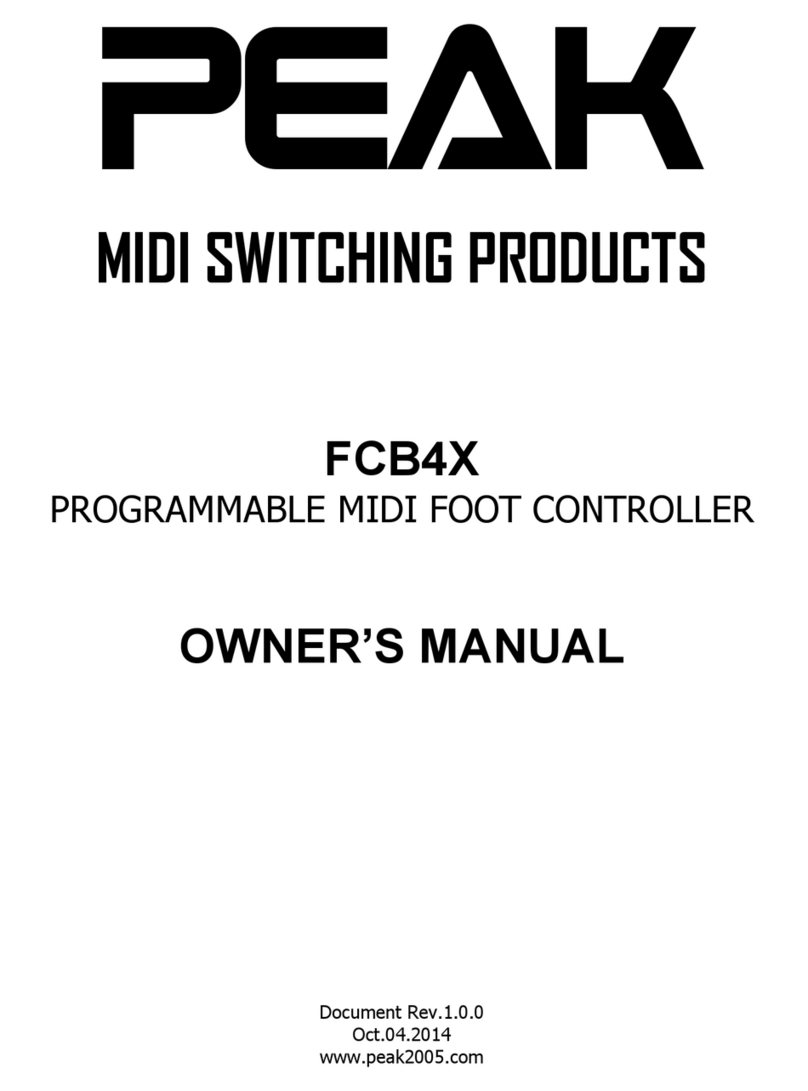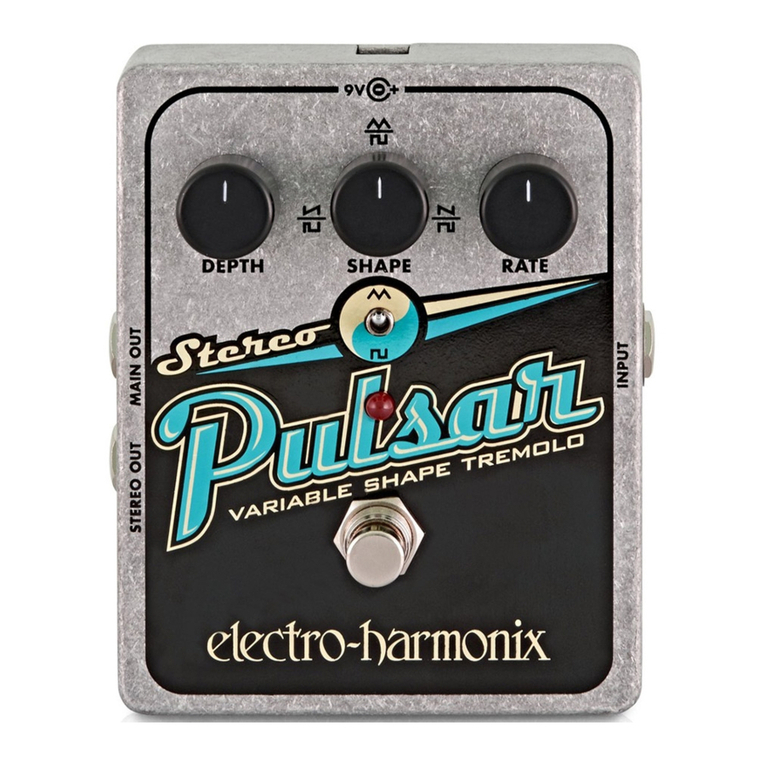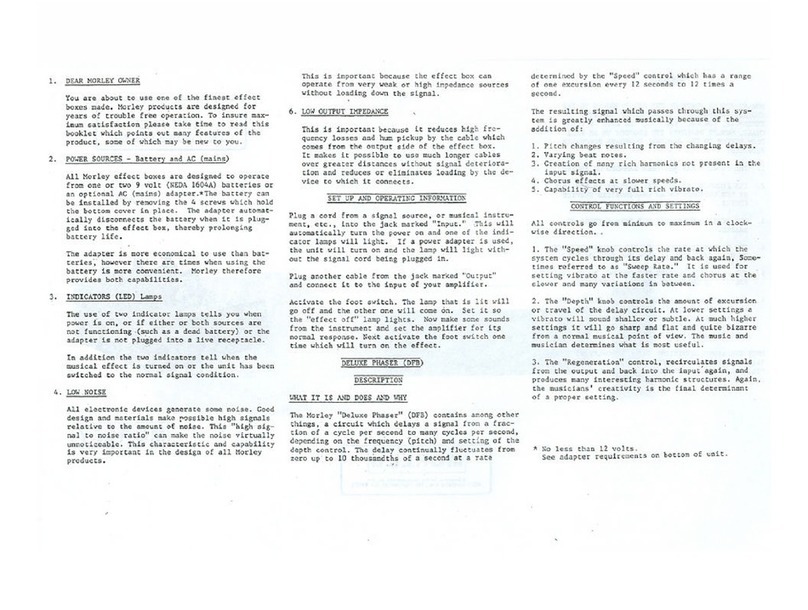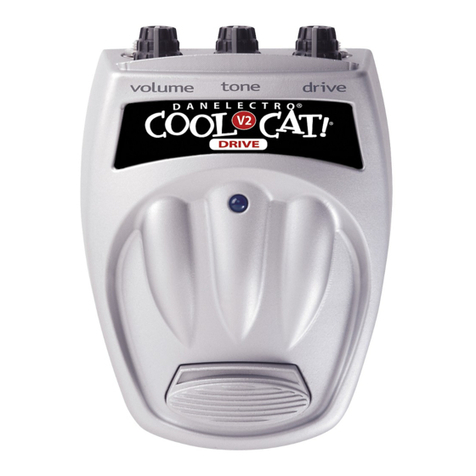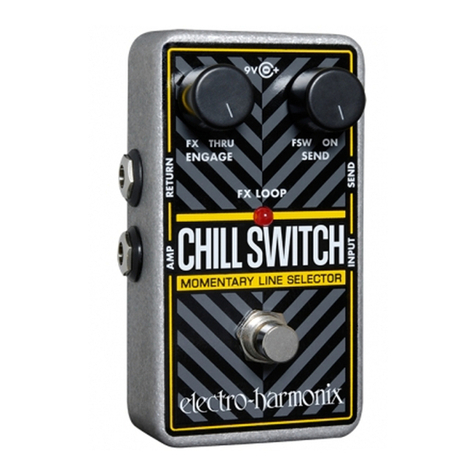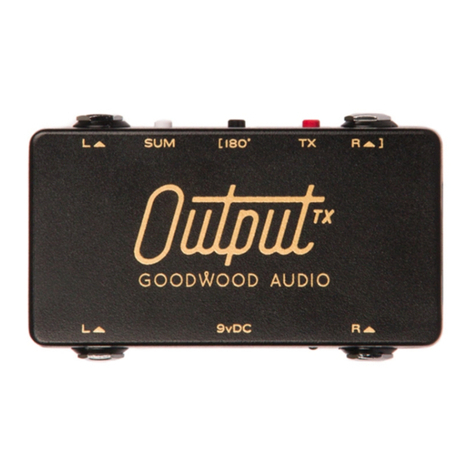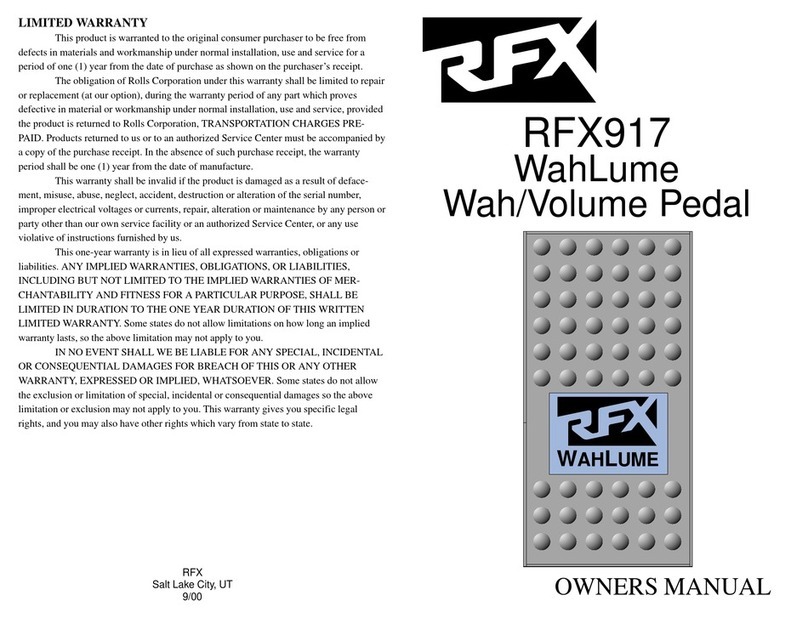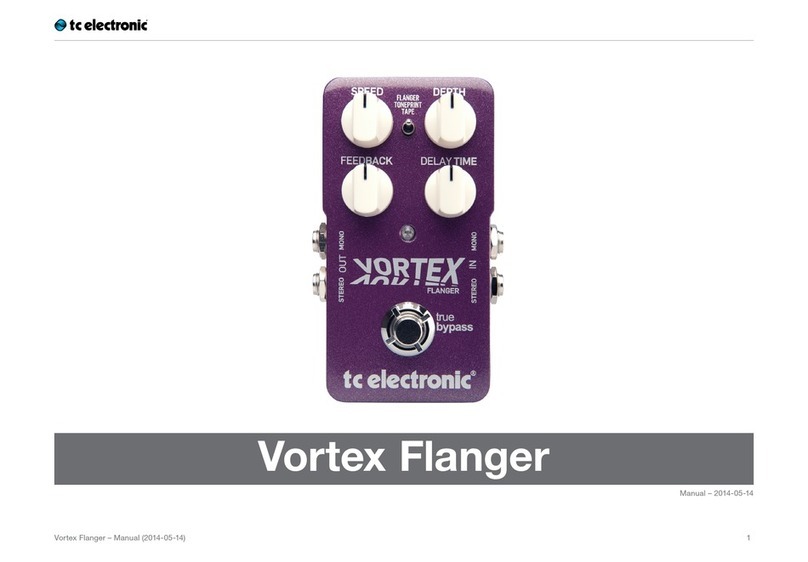Empress Effects Vintage Modified Superdelay User manual

user manual
tape delay

Introduction
During the development of our Vintage Modified Superdelay, we
spent over 2 years perfecting the tape modes, painstakingly
recreating some of our favourite analog tape machines. Empress is
proud to have these tape modes available all on their own. We've
added features like an all-analog dry path, soft touch switches, trails
and true bypass, as well as an advanced configuration mode that
lets you customize the functionality of the tape delay to suit your
needs.
Thanks for your support!
- Steve Bragg

Quick Start
Basic tape delay: warm and dark repeats with wow and flutter
Dotted eights: rhythmic delay (tap quarter notes on the tap switch)

Quick Start ...continued
Ambiance: creates a continuous pad that sits under your playing
Slapback delay: a short delay that gives life to your sound

Clean repeats: the clarity of new tape, distinct repeats.
Lead Tone: a good delay for soloing that also boosts your volume

The Tap Stompswitch
The tap stompswitch does different things depending on which
mode it's in.
Tap mode: When the delay time toggle is set to "tap", the Tape
Delay is in tap mode. The tap stompswitch is used to tap in a tempo.
The "d time|ratio" knob can be used to select various ratios of this
tempo.
Preset mode: When presets are enabled (see "Using Presets" and
"Advanced Configuration"), the tap stompswitch is used to toggle
through presets.
Non-tap mode with presets disabled: When the delay time toggle is
set to "slow" or "fast", and presets are disabled, the delay speed is
controlled by the d time|ratio knob. If blips are disabled (which is
the default behaviour), pressing the tap stompswitch erases the
audio in the delay line. This is useful if you want to play chords that
don't run into each other. If blips are enabled (see "Advanced
Configuration"), holding this down leads to some blips and blops.

Using Presets
The Empress Tape Delay ships with presets disabled, but can be set
to use either 2 or 3 presets, using the advanced configuration. Note
that presets cannot be used while the Tape Delay is in tap tempo
mode. The rest of this section will assume that presets have been
enabled and that the delay time toggle switch is away from the tap
mode.
To toggle through the presets, simply press the tap stompswitch.
The color of the tap led indicates the current preset. All changes
made to the controls of the Tape Delay will be automatically saved
to the current preset.
You can lock your presets, to prevent them from being overwritten,
by using the advanced configuration. When presets are locked,
changes made while the preset is engaged will not be saved.

Controls at a Glance
Power: 9V DC negative tip
2.1mm jack. 280mA or greater
-
+
delay time: sets the range of the d time|ratio knob to
slow or fast. alternatively, set to tap to control the
delay time via the tap stompswitch
mix: controls the level between the dry signal and the
wet, delayed signal. counterclockwise is 100% dry,
clockwise is 100% wet and center is 50% / 50%
tape age:
new - lush, clean repeats. tape delay machine with a
new tape and a full frequency response
vintage - added wow and utter giving the rich, full
bodied feel of a vintage tape machine
old - saturated, warm delay. lots of compression and
dark, rolled o high end oered up by old tape and
worn heads
d time | ratio: controls the delay time. in tap mode, it
controls the ratio of the delay time relative to the tempo
that is tapped
for example, at 1:2, the delay time will be twice
as fast as the tempo tapped
tap stompswitch: in tap mode, this sets the delay time
when tapped. it will change to the new delay time after
2 taps and will average the last 4 taps

Controls at a Glance
Power: 9V DC negative tip
2.1mm jack. 280mA or greater
bypass stompswitch: when the LED is shining, the delay
eect is applied to the signal. when o, the pedal is being
bypassed
output: sets the overall output level(volume) of the pedal
feedback: controls how long the delayed signal takes to
decay. If turned fully clockwise, the signal will swell instead
of decay
modulation: applies modulation to the delayed signal
- the little setting is a slower, more subtle modulation
- the lots position is a faster, slightly deeper modulation
lter: adds a high pass (hp) or a low pass (lp) lter to the
delayed signal

Advanced Conguration at a Glance
Presets: Choose how many
presets are used when in slow
or fast mode.
left(default): no presets
center: 2 presets
right: 3 presets
Bypass Mode: Choose how the
pedal is bypassed
left(default): buered bypass
with trails
right: true bypass
Blips: Choose how the
delay time changes when the
knob is turned
left(default): (blips o ) smooth
transitions between delay times
right: (blips on) tape head
moved quickly, producing crazy
pitch changes as the new delay
time is established
Presets write protect: Choose
if presets are write protected or
adjust on the y
left(default): presets rewritable
right: presets are write-
protected

Advanced Configuration
The Empress Tape Delay ships with the following default behaviour:
no presets, buffered bypass, and smooth delay time changes. You
can modify this behaviour in the advanced configuration.
Entering the advanced configuration: Unplug the power from the
Tape Delay. Plug the power back in while holding down both the tap
and bypass stompswitches. The bypass LED should blink twice to
confirm that you are in the advanced configuration.
Factory reset: While in the advanced configuration, press the
following stompswitches in order: tap, bypass, tap, bypass. The LEDs
will do a little dance to confirm that the Tape Delay has been reset
to its factory settings. Please note that this overwrites the current
presets with the factory presets.
Modifying the advanced configuration: Each toggle controls a
configuration parameter. When a parameter is modified, the tap
LED will blink to confirm that a change has been made.

Exiting the advanced configuration: Hold down both the tap and
bypass stompswitches. The bypass LED will blink twice to confirm
that the Tape Delay has exited the advanced configuration.
Buffered Bypass vs. True Bypass
The Tape Delay can operate with buffered bypass or true bypass. It
ships with buffered bypass enabled. This option can be changed in
the advanced configuration.
Buffered bypass: When the effect is bypassed, the input to the
delay line is disconnected and the dry signal is set to unity gain. The
output of the delay line is still summed with the dry signal however,
so the delay repeats (commonly referred to as "trails") will be
heard.
True bypass: When the effect is bypassed, it is completely
disconnected from the signal chain using a mechanical relay.

Adjusting the Headroom
The Empress Tape Delay has an internal switch which allows for the
adjustment of the input headroom. This switch is accessed by
removing the back plate. The pedal ships with the switch in the -6dB
position, which allows for an input level of +5.1dBu. If the input to
the Tape Delay is especially loud, and you are noticing distortion,
you can increase the headroom by moving the switch to the -12dB
position. If the input is low, and you'd like to increase the signal-to-
noise ratio, you can move the switch to the 0dB position.

Powering the Tape Delay
Go to www.empresseffects.com/power.html for a full list of
compatible power supplies.
Please Note: The Empress Tape Delay requires at least 280mA of
current to function properly. Any power supply rated at 9V DC,
supplying negative tip polarity ( ) and at least 280mA of
current should work.
Popular options are the Boss PSA-120S or PSA-240 (not the PSA-
120T because it only supplies 200mA). When powering with the
Voodoo Lab Pedal Power 2+, you will need to use output 5 or 6 and
the dip switch should be set away from the normal position.
If your Tape Delay is underpowered, symptoms could include:
powering off, bypass turning on/off quickly, weird sounds and
functions not working properly. If you have any questions on
powering your Tape Delay, please call us at 888-676-1853 or email
us at support@empresseffects.com.

Legal Stuff
FCC Compliance
Note: This equipment has been tested and found to comply with the limits for a Class B
digital device, pursuant to part 15 of the FCC Rules. These limits are designed to provide
reasonable protection against harmful interference in a residential installation. This
equipment generates, uses and can radiate radio frequency energy and, if not installed and
used in accordance with the instructions, may cause harmful interference to radio
communications. However, there is no guarantee that interference will not occur in a
particular installation. If this equipment does cause harmful interference to radio or
television reception, which can be determined by turning the equipment off and on, the
user is encouraged to try to correct the interference by one or more of the following
measures:
- Reorient or relocate the receiving antenna.
- Increase the separation between the equipment and receiver.
- Connect the equipment into an outlet on a circuit different from that to which the
receiver is connected.
- Consult the dealer or an experienced radio/TV technician for help.
Modifications not expressly approved by the manufacturer could void the user's authority to
operate the equipment under FCC rules

Specifications
Input Impedance:
1MΩ
Output Impedance:
1kΩ
Frequency Response (-3dB):
Input Headroom with -6dB pad:
Input Headroom with -0dB pad:
Input Headroom with -12dB pad:
Output Headroom:
Distortion:
Signal to Noise:
8Hz –18.5kHz
+5.1dBu
+0.2dBu
+10.8dBu
+10.2dBu
0.40%
102.7dB
Input Voltage:
9VDC
Required Current:
Power Input Connector:
Height (enclosure only):
Height (including controls):
Length:
Width:
Weight:
280mA
2.1mm Barrel Connector
1.5”
2”
3.5”
4.5”
12.5oz
User Manual Version 2.0
This manual suits for next models
1
Table of contents
Other Empress Effects Music Pedal manuals
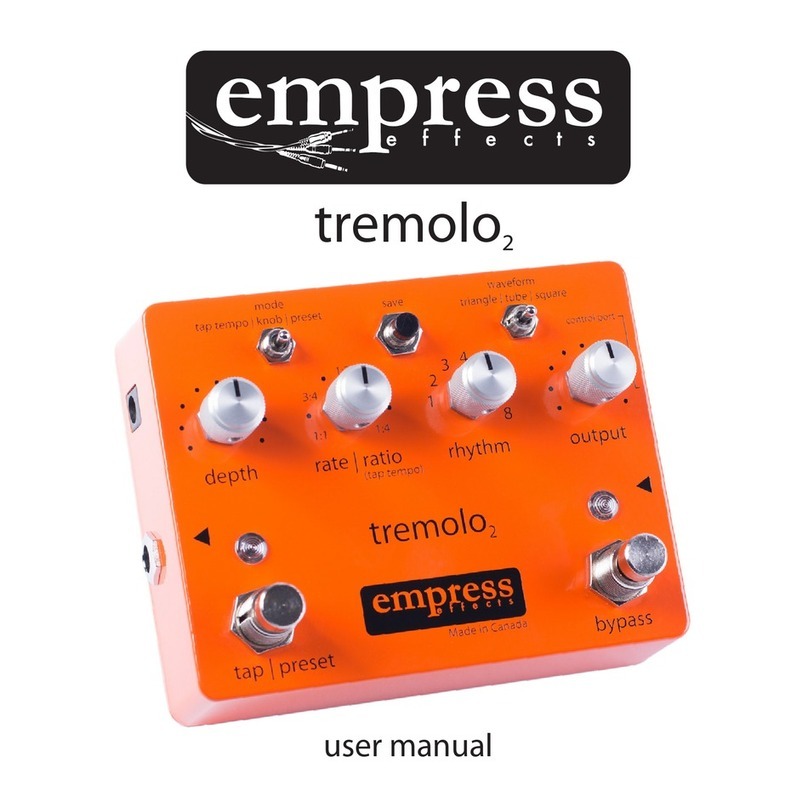
Empress Effects
Empress Effects tremolo 2 User manual
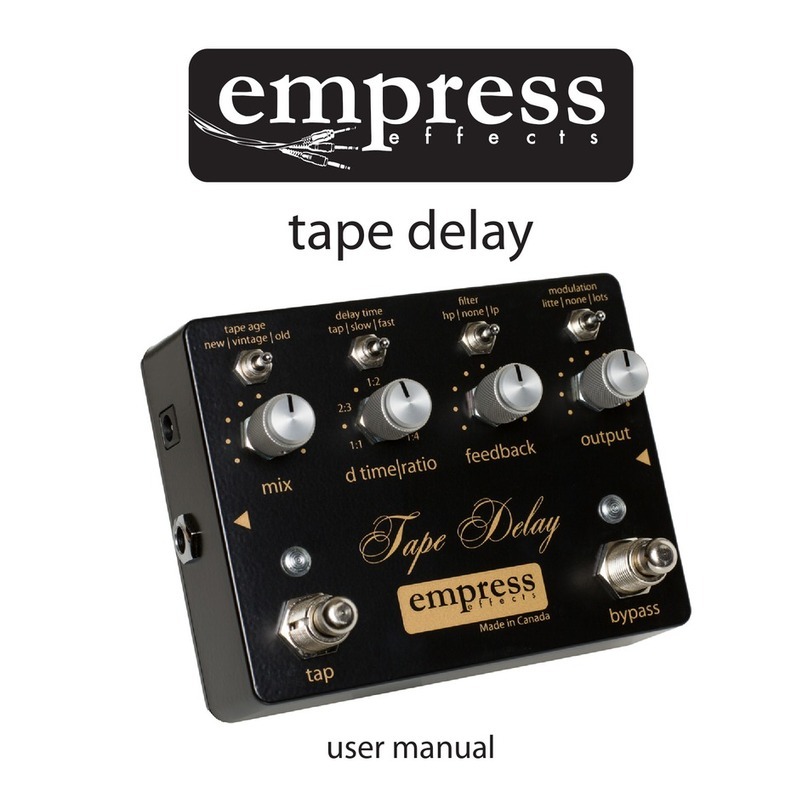
Empress Effects
Empress Effects tape delay User manual

Empress Effects
Empress Effects HEAVY MENACE User manual
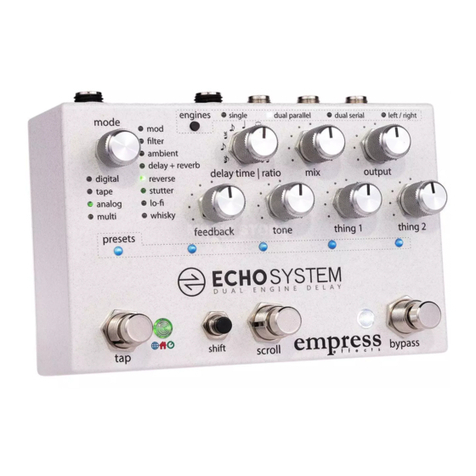
Empress Effects
Empress Effects ECHOSYSTEM User manual
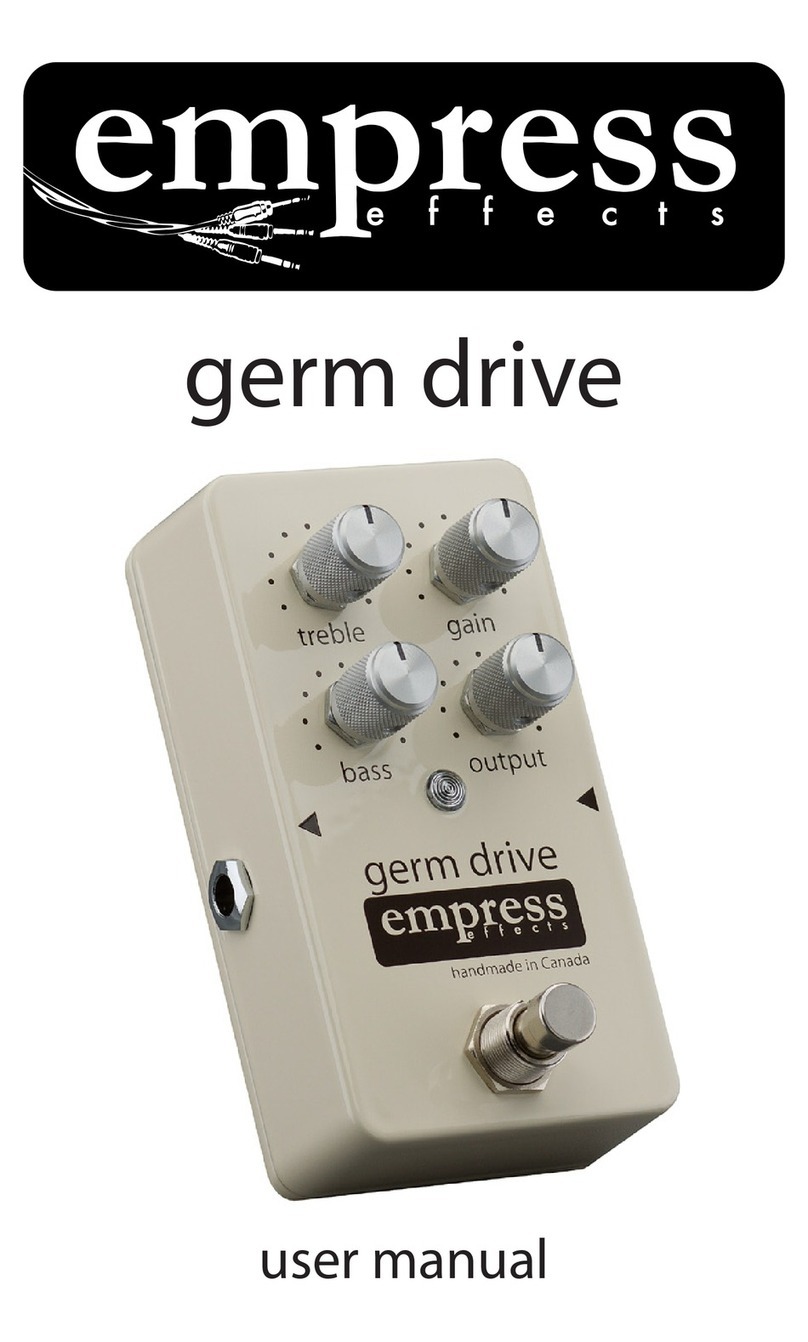
Empress Effects
Empress Effects germ drive User manual

Empress Effects
Empress Effects Reverb User manual

Empress Effects
Empress Effects Superdelay User manual
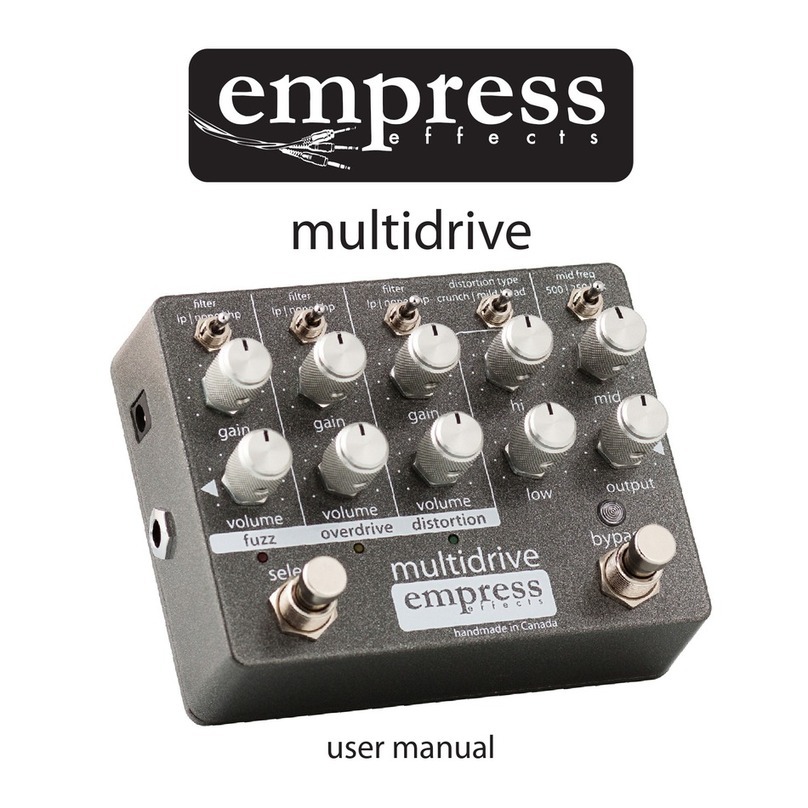
Empress Effects
Empress Effects multidrive User manual
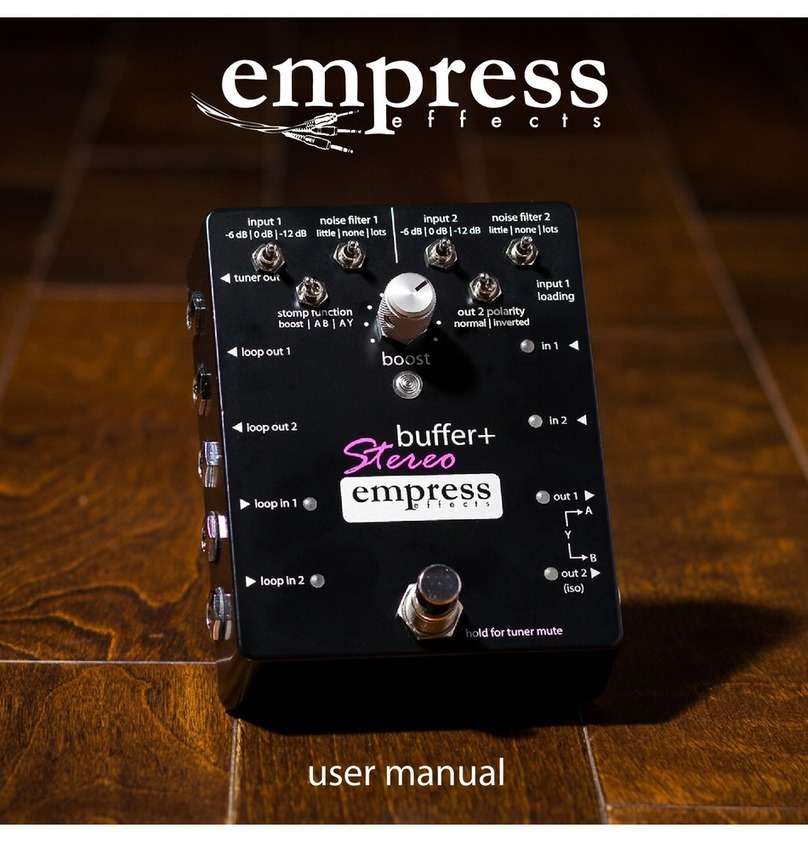
Empress Effects
Empress Effects buffer plus User manual

Empress Effects
Empress Effects tremolo User manual

